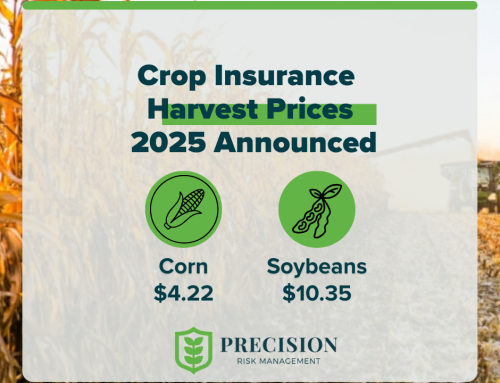Hybrids build yields in different ways; understanding those differences can help farmers maximize their potential.
Source: AgriGold news release
WESTFIELD, Ind. – AgriGold Agronomist Sam McCord’s multiyear kernel count study started as an attempt to get a better handle on how many kernels it takes to make a bushel and whether that varies by hybrid (spoiler: It absolutely does).
His efforts and the kernels per bushel report it generated take things a step further, providing a better understanding of how and when hybrids flex. Farmers can use that to home in management to get the most yield out of their hybrids.
“There are subtle differences with every hybrid,” McCord explains. “This data reflects that. It gives farmers an in-depth look at what they can expect with these hybrids and how they can help them perform their best.”
Methods and applications
To gather the data, McCord heads to a representative spot within a test plot soon after the crop hits black layer. He takes stand counts in thousand-per-acre increments, or roughly 17 1/2 feet in 30-inch rows. Within that stretch, he counts the kernels on three different ears — one from the beginning of the tape measure, one from the middle and one from the end. He repeats the process for a second row.
Then, McCord uses that data along with the plot’s harvest yield to make calculations for kernels per bushel, kernel weights or bushels per thousand plants. That information helps McCord and the farmers he works with maximize their yields.
As an example, bushels per thousand plants can help with population calculations. “If we plant 30,000 plants and we estimate we’ll get 8 bushels per thousand plants, that’s a yield of about 240 bushels per acre,” he explains. “An average around the country is more like 7 bushels per thousand. If you’re below that, you’re probably planting too thick.”
A better understanding of flex type can enhance management
A647-42 can produce “horse-teeth kernels” when given a nutritional boost during grain fill, says AgriGold Agronomist Sam McCord.The kernels per bushel data also provides insight on flex type and, in turn, management recommendations, such as the best time to supplement nutrients. This is especially helpful with newer hybrids.
There are three main ways a hybrid will flex its ear: by girth, length or kernel depth. AgriGold specifies the most dominant flex type in its product profiles. “There are subtle differences with each product when it comes to flex,” McCord says, noting most hybrids flex in a combination of ways. Kernel count data can shed light on those nuances.
Hybrids that flex by girth or length make their yield by having a lot of kernels, McCord explains. “Kernel girth is determined around the V5 to V8 stages of development and kernel length is set in the weeks around V12 to V15.
Therefore, these types of hybrids generally need more nutrients on the front end of the season.” Products that primarily flex by kernel depth, on the other hand, benefit from nutrients during grain fill.
“A647-42 is an example of a product with extremely heavy kernels,” McCord says, noting it has been No. 1 in kernel weight in his trials each of the past three years. The 117-day hybrid flexes by both kernel and girth.
Therefore, McCord says good nutrient levels at the beginning and end of the season is important. “If you can follow an early season nutrient application up with another application during that R2 to R3 stage, you can pack on some weight.”
Data makes a case for planting diverse genetics
“The kernel per bushel report can help a farmer understand ear flex and pinpoint when stress occurred during the growing season,” McCord says. “Farmers who want to understand their hybrids a bit better and push the limits on yield have used this data to fine-tune their management.”
The report also drives home the value of using multiple hybrids to spread risk. For example, kernel-count products like those in Field GX Family B fill grain relatively quickly and should be able to make and hold on to yields, even if grain fill conditions are stressful. On the other hand, a kernel flex hybrid like you find in Family F might do better in a year when stress comes early but grain fill conditions are ideal.
Planting several genetic families on a farm helps mitigate risk. “I recommend farmers plant a minimum of three hybrids across their farm,” McCord says. “You never know what’s going to transpire in the growing season.”
For support making those hybrid decisions or to learn more about adjusting management to flex type, reach out to your local AgriGold agronomist.
ABOUT AGRIGOLD
AgriGold offers high-performing hybrids paired with the latest agronomic knowledge and data to achieve exceptional crop performance, year after year. Based in Westfield, Indiana, AgriGold is for the farmer who wants a true seed partner that is an ally in the field. For more information, visit AgriGold.com and follow us on Facebook, Instagram, LinkedIn and X, formerly known as Twitter.
ABOUT AGRELIANT GENETICS
AgReliant Genetics is committed to providing trusted seed solutions that help farmers grow. We do this by focusing solely on seed and delivering one-of-a-kind, high-performing hybrids. Founded in 2000 by global seed companies KWS and Limagrain, AgReliant Genetics benefits from direct access to a global corn germplasm pool and has a top four corn research program. Through our seed brands — AgriGold and LG Seeds in the U.S. and PRIDE Seeds in Canada — we proudly offer the latest innovation to our farmer customers, whether they grow corn, soybeans, sorghum or alfalfa. Discover more at AgReliantGenetics.com.





